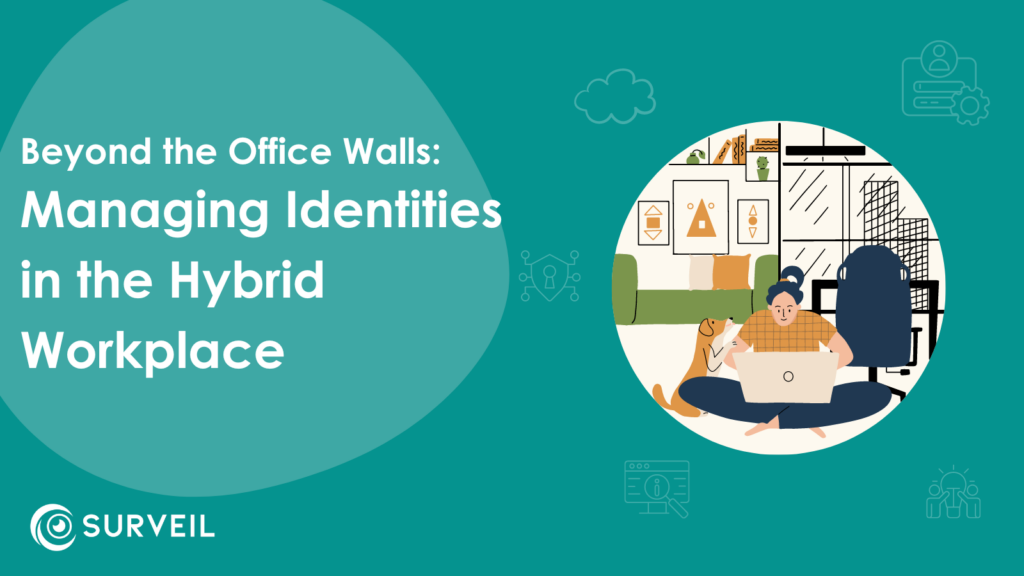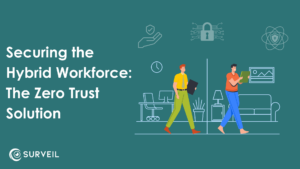With the working world no longer fitting the cookie-cutter image of the traditional office, organisations are looking to a refreshed identity management approach to keep employees secure.
In the era of hybrid working, the lines between physical and virtual workplaces have truly blurred. No longer confined to the four office walls, employees are seemingly free to work from anywhere. But with this new sense of freedom (and all the benefits it offers) comes a whole raft of challenges.
Take, for instance, securing data. With employees working from coffee shops and other public places, it theoretically only takes a prying pair of eyes, or a minute too long spent away from the table to spell a security disaster.
In an effort to make hybrid and remote working viable, organisations are unsurprisingly looking to secure this new workplace reality – and in particular, they’re re-examining the role identity and access management (IAM) plays in keeping the company’s assets secure.
Defining the New Security Perimeter
This call for a refreshed identity management approach is arguably linked to how hybrid working has transformed the security perimeter. Whereas previously IT only had to focus on the goings-on inside the office walls, the reach of the security perimeter can now extend far across country – or even the globe.
This expanded security perimeter demands an approach that can keep pace – one that secures remote access to data and systems, offers robust endpoint protection, and enforces strong authentication protocols. The answer, many have agreed, is Zero Trust.
Offering continuous authentication and built on the principle of least privilege, the Zero Trust model has been positioned as the ideal option for businesses looking to better secure their identities in a shifting landscape. Thanks to Zero Trust’s rigorous demand for verification, an individual’s access to sensitive resources can be strictly managed – ideal when employees are out in the wild.
These measures are most often recognised in the likes of multi-factor authentication (MFA – a key Zero Trust component), which can minimise the risk of unauthorised access to devices and data by requiring absolute authentication based on varied factors. Components such as MFA enforce the Zero Trust approach, and their role in protecting identities mustn’t be underplayed.
Governing Access Control & Authorisation
Traditionally, identity management has been responsible for granting employees access to the likes of physical office spaces and controlled internal wireless networks. While hybrid and remote employees might not be in the office often enough to need a swipe card anymore, IAM’s modern-day responsibility to govern access is still relevant – if a little different.
Role-based access control (RBAC), for example, has always limited access to people in specific roles. Now, however, it doesn’t just secure doors: businesses can assign specific permissions that take effect across the entire cloud estate, partitioning sensitive information without obstructing access to necessary resources.
Cloud-based solutions are especially helpful in this area, providing the flexibility to implement access control measures quickly and at scale. As a result, admins are supported in users’ privileges, permissions, and the underlying authentication protocols. Much like setting up a tripwire in front of the door, setting up access policies and monitoring user activity allows admin to respond to unusual behaviour quickly, mitigating needless security risks.
Keeping Pace in the Cloud
Underpinning these new identity management efforts is an appreciation for cloud infrastructure. By offering scalability, flexibility and increased security, the cloud can enable businesses to seamlessly adapt to the dynamic nature of hybrid and remote working.
Microsoft 365 is a great example. Users can ensure secure controls and access to business resources across many locations and devices by managing identities at scale. This is especially useful when driving the digital transformation essential to adopting a new way of working, with manual tasks optimised to keep pace. For example, HR and IT can better manage joiners, movers, and leavers by ensuring individuals only ever have the correct permissions as they move through the organisation – therefore securing the overall JML processwhile effectively partitioning data.
Of course, there’s also a need to cater for the small differences between traditional and modern workplaces – the moments often not thought about. In this instance, that might be heading down to the IT department to ask for a password reset; by offering password self-serve through the cloud, users are given the chance to be responsible for their own security, without being tethered to the office.
The View from Above
Insights play a crucial role in maximising the effectiveness of cloud-based identity management, thanks to the reliable and necessary foundation for secure business practice they provide. They help us to gain a better understanding of employees – their roles, behaviours, permissions, and access requirements – which in turn gives us direction on how to increase security, provide support, and ensure access to impactful resources. With this view from above, businesses can move on risks to identities with greater agility, greater impact, and greater confidence.
Surveil is on hand to provide that view.
By surfacing deep Microsoft 365 analytics, Surveil makes it possible to monitor the security solution usage, gain visibility over admin rights, and throw a spotlight on lingering leaver permissions. With the right insights, businesses can proactively monitor and manage identity-related risks and maintain compliance with regulatory frameworks – facilitating continuous improvement within the identity management process.
With employees hoping to work from anywhere and IT sweating over access, it absolutely makes sense to rethink identity’s role in securing the organisation – and what better way to get started than with a detailed view from above?
Surveil provides the actionable insights to help Microsoft users to thrive – even in an era of refreshed identity management and new working structures. Get in touch today to see how we can help you.






